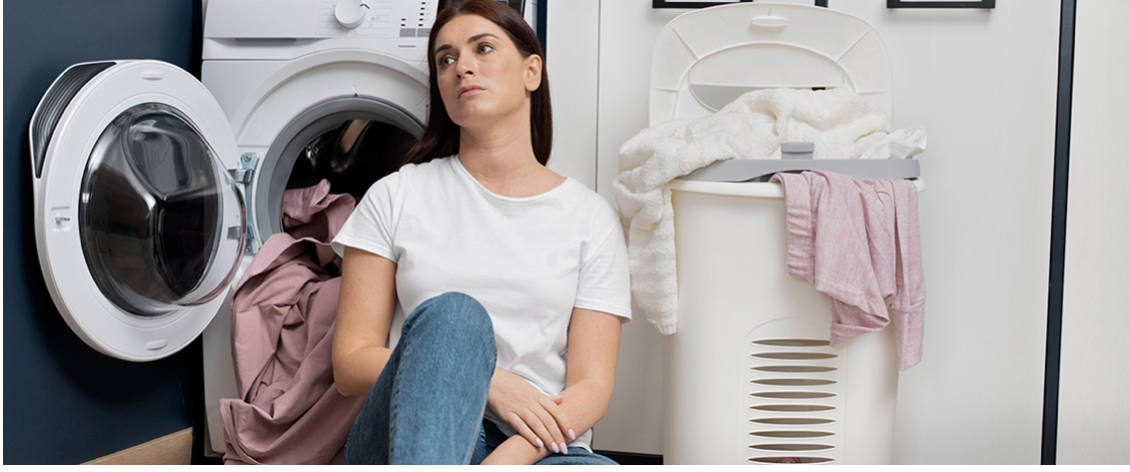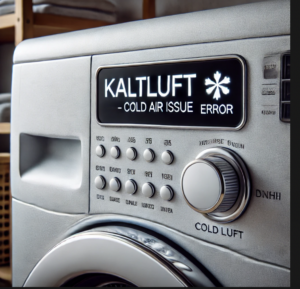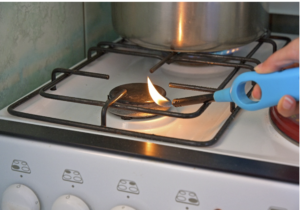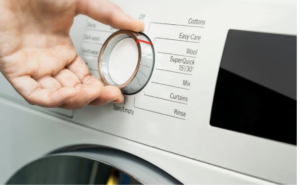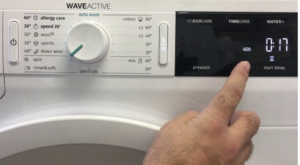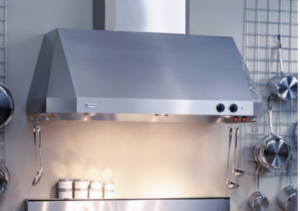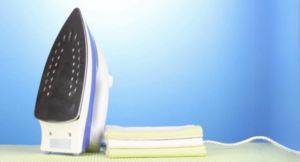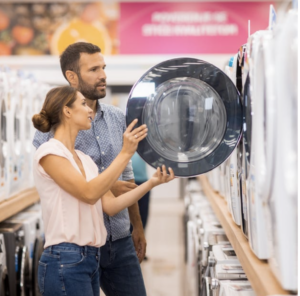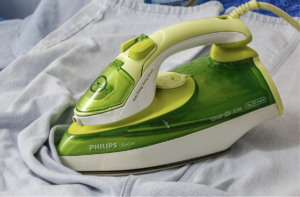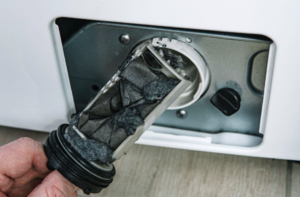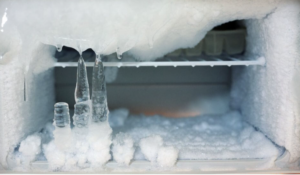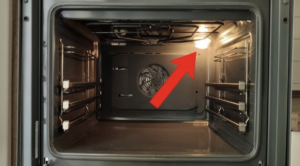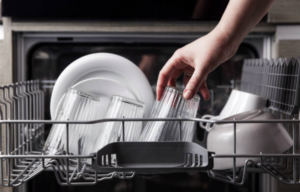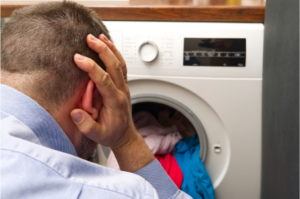
The most common washing machine problems and their solutions
Some problems with your washing machine seem insoluble at first glance. But each of them has its own explanation and way to deal with it. To do this, you need to "listen" to the signals that your washing machine "gives" you. This way, you will always know what to do to return it to its optimal condition.
Problem #1: The washing machine is noisy
Vibrations and sounds coming from a running appliance can be really annoying. But if the noise is louder, then there really is a problem. The most common causes of this are objects that have fallen inside, such as coins or buttons.
Sometimes they get into the drum filter or can get stuck inside. This causes a deafening noise during operation of the appliance. If the sound is not coming from objects stuck in the drum, the cause may be serious damage to the motor.
How to deal with this problem
The best way to avoid this is to check your clothes for any remaining objects. You can look in the filter or hose for coins or buttons. Do this after the cycle. If there is anything stuck there, remove it before setting the machine for the next cycle.
In case the object is stuck, you should wait until it falls into the filter or the cycle is finished. If the sound is not caused by a stuck coin or other small item, it is advisable to seek the help of a service center.
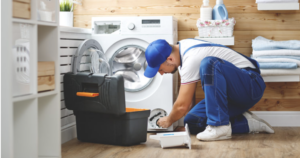
Problem #2: The washing machine does not spin
Overloading can often affect the drum's rotation. Sometimes, adding too much laundry can hinder the machine's performance. Another cause could be a blockage in the appliance's pipes. This can cut off the water flow to and from the machine, causing it to stop spinning.
If overloading or clogging is not the reason why the drum does not spin, it could be due to a fault in the control board or motor. In this case, you should remove the washing machine panels and check for any defective parts with a multimeter.
How to deal with this problem
Try removing a few items from the load to see if the drum will start spinning again. You can check the inlet and outlet pipes for any blockages that are blocking the water supply or drainage. If neither of these measures affect the spin, call for service.
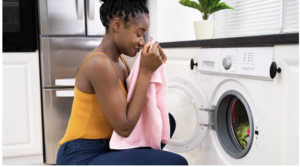
Problem #3: The washing machine smells
Washing bed linen can lead to a build-up of bacteria and dirt, creating unpleasant odours. This happens when you frequently run programmes at lower temperatures. Also, some clothes can clog the filter and cause dirt to build up.
How to deal with this problem
Try washing the inside with hot water occasionally to prevent bacteria from growing. Check the filters after each cycle to avoid clogging. You can keep the washing machine door open when not in use to allow moisture to escape.
Never leave laundry inside after the cycle is over. If that doesn't work, try running it on the highest heat setting with baking soda and vinegar. This is completely safe for the appliance and will help to tackle dirt and bacteria.
Problem 4: The washing machine moves during the cycle
Remember that this is completely normal, at least in most cases. If the vibration is too strong and causes the washing machine to move, there could be several reasons. The most common is poor leveling. The washing machine may be placed on an uneven surface, which disrupts its balance. Another cause is worn or loose shock absorbers.
How to level a washing machine
If you are installing or moving your machine or wondering why it moves too much during a cycle, make sure it is placed on a level surface. To do this, you will need a spirit level, a wrench, or adjustable pliers. These will help align the washing machine to the floor, which in turn will make it quieter and more efficient.
The leveling process is essentially the same regardless of the type of appliance. However, there are slight differences in how you actually adjust the metal and plastic feet.
Start with the shortest legs possible when installing a washing machine. The units have adjustable legs that can be extended a few inches if needed. However, the washing machine will be more stable if they are only adjusted as much as necessary to level the machine.
Place a level on each side of the unit. Adjust one or both of the front feet until the bubble is centered. If the feet are metal, then the locking nut must be loosened with a wrench. Then turn clockwise. This will shorten the metal foot. When you turn it counterclockwise, you lengthen it.
For plastic feet, use adjustable pliers. Some people prefer to reduce the pressure when turning for fear of bending the feet. In this case, use a wooden block to place under the front of the washing machine. Then adjust the feet. Remove the block, check the level reading, and repeat if necessary.
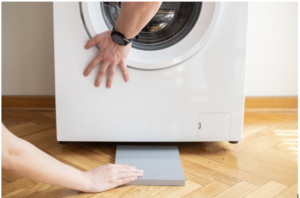
Adjust the machine starting from the front and then working your way to the back. This applies to machines with self-leveling feet. Most modern washing machines come with such feet placed at the back.
So you just need to lift the unit about 2.5 cm. off the ground and then put it back down. Self-leveling feet sometimes get stuck or rusted. Lifting the machine usually loosens them and makes them easier to level.
If the self-leveling feet still do not move after you put the weight of the machine on them, then raise the rear of the machine a little higher off the ground. Preferably about 10–15 cm. Then tap the rear feet with the wrench or pliers. This will make them easier to loosen.
Older washing machine models may not have self-leveling rear feet. If they look exactly like the front feet – for example, they have locking nuts and/or places to grip with pliers – they will need to be adjusted manually.

First, start by leveling the two rear feet. Check the level readings and readjust the feet if necessary. This is easier to do if you place a block of wood under the rear of the machine.
Shake the machine once it is leveled for a final check. Even after your appliance is completely level, one of the feet may not be touching the floor. This happens if the surface is uneven. In this case, you need to adjust the corresponding foot if it is hanging off the floor.
Once you have leveled your washing machine, check it again every 6 months by shaking it and placing a level on each side. Machines can shift over time.
Adjusting the metal leg
Loosen the locking nut with an adjustable wrench. On appliances with metal legs, this is located at the base of the leg, against the underside of the washing machine. Adjust with the wrench by turning the nut clockwise.
Continue doing this until it starts to slide down the leg. Stop when the nut is about 1.5 cm. from the bottom of the washing machine. Turn the leg if you want to lower or raise it. After that, you will be able to do it by hand.
Squeeze it between your two fingers and turn it clockwise if you want to shorten your leg. Turn it counterclockwise when you want to lengthen it.
It is best to make small adjustments. For example, turn the leg just 1 or 2 turns to lengthen or shorten it. Then check the level again and repeat if necessary. Tighten the locking nut with the wrench to reach the target leg length.
Adjusting plastic feet
This type is easier to level than the metal ones. However, you will need a tool to do this because it is difficult to do by hand. If the foot of the foot is octagonal, you can use a wrench instead.
Turn to raise and lower the washing machine. Squeeze the handles of the tool so that the teeth are tight against the sole of the foot. Then turn clockwise if you want to lengthen it. Turn the foot counterclockwise if you want to shorten it.
As with metal legs, it's best to make small adjustments and check their length frequently over time.
Don't over-tighten plastic legs. While they are easier to adjust than metal ones, they are also more prone to bending, warping, or breaking, especially if they are extended more than necessary.
While leveling the washing machine, try shortening just one leg instead of lengthening the other. If they are all adjusted more than about 1/2 inch (1.3 cm) and that doesn't work, consider returning them to their original positions and starting to level the washing machine again.
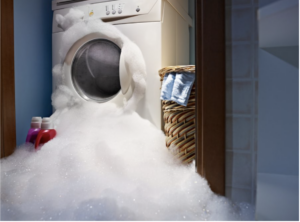
Problem #5: The washing machine is leaking
This is probably the most common problem with this type of appliance. Possible causes could be a loose water hose connection, a worn seal, or a cracked drain hose. Over time and the rapid vibrations of the washing machine during each wash cycle, these internal components wear out or become disconnected.
How to deal with this problem
To fix the water supply hose connection, increase the distance between the washing machine and the wall. Check the loose connection and tighten it further. If the problem persists, replace the hose seals that prevent water leakage.
To fix a leak in the drain hose, turn off the power source and open the machine casing. If you find damage to the drain hose due to rust, you must replace it.
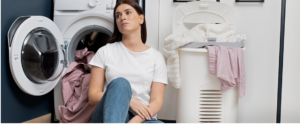
Problem #6: The washing machine won't fill with water
Sometimes it happens that appliances turn on but do not fill with water. The likely cause may be a clogged hose. Other causes include clogged taps or a filter.
How to deal with this problem
Unclog the hose to release the water supply. If this does not help, check the taps. To clean them, you must first close them. If the problem persists, then something is wrong with the soft connection of the valve in the filter. Then you should contact a washing machine service center .
Problem #7: The washing machine won't drain
This is due to a blockage in the drainage system, where soap, threads, coins, etc. have built up. It consists of a filter and a hose. In addition to it, the washing machine usually has another drain hose at the back of the appliance, where blockages most often occur.
How to deal with this problem
Check the filter inside to clean it of any buildup. If the water is not draining, you may need to manually drain it to check the drain hoses. Clean them after pulling the washing machine away from the wall.
The two drain hoses are detachable and easy to wash. If the problem is not resolved, the cause of the problem may be a serious internal fault that requires expert assistance.
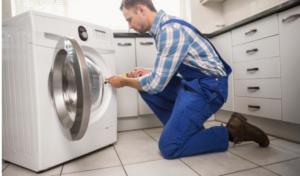
Problem #8: The washing machine door won't open
Sometimes the door of the appliance gets stuck while the water starts to fill. It may not open even after the wash cycle is finished. The reason may be a clogged filter or overheating due to too long operation. The control board may be broken or there may be a fault in the door switch.
How to deal with this problem
Select a different wash cycle so that your washing machine drains the water and allows you to open the door. Check for a clogged filter. Sometimes the washing machine overheats due to overloading or setting multiple cycles in a row.
During this time, the appliance may turn on, but the sensor will not allow the door to open. Allow the washing machine to cool down. In case there is a problem with the switch or control board, do not attempt to repair them. Seek professional help to prevent further damage.
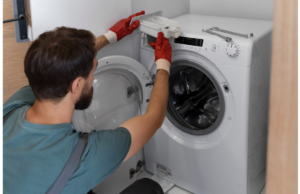
Problem #9: The washing machine damages clothes
Sometimes laundry can come out deformed after a cycle. The reason may be overloading the appliance or selecting the highest speed. Such a program is not suitable for delicate fabrics. Mixing everyday clothes with thinner fabrics can also damage the laundry. Another reason is using too much bleach.
How to deal with this problem
Wash jeans and jackets separately. Delicate linens such as lace and silk can be easily damaged during spinning if there are clothes with zippers, sequins, buttons, etc. in the laundry.
Choose lower speed programs and do not overload the washing machine. Make sure to use a moderate amount of detergent.
Problem #10: The washing machine won’t turn on
If the appliance stops during the operating cycle or does not turn on, the cause may be the power source.
How to deal with this problem
Unplug the power cord and plug it back in. To check if the power supply is working, try another device.
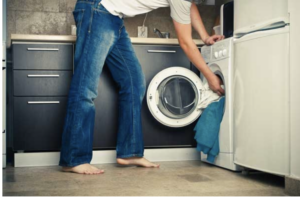
Problem No. 11: The preparation does not dissolve
Sometimes the dispenser becomes clogged, preventing the appliance from functioning properly. The cause may be a buildup of too much detergent.
How to deal with this problem
Try cleaning the dispenser. Add a little distilled vinegar and run the washing machine on a normal spin cycle to remove any buildup. Always follow the instructions recommended in the appliance's user manual. Do not use harsh detergents.
What are the most common problems with the washing machine:
It is noisy and vibrates. |
Damages clothes |
It emits a smell. |
The machine door will not open. |
Not included |
The preparation does not dissolve. |
